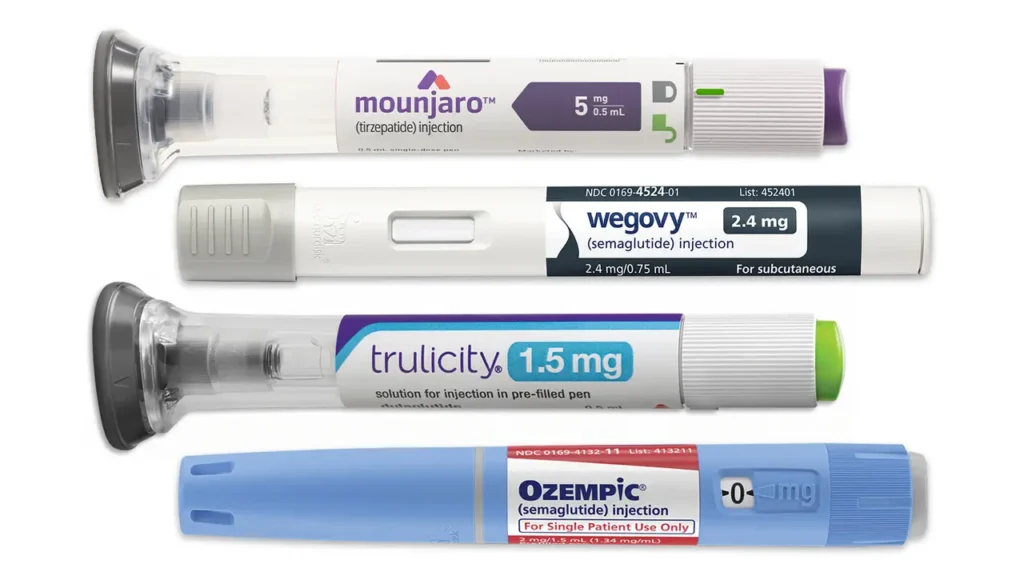Key Takeaways
- Hi-def lipo and 4D liposculpture are refined fat extraction methods employing ultrasound devices like VASER to meticulously carve the body.
- Hi def lipo is all about muscle definition and a chiseled appearance, 4D liposculpture includes the addition of volume for a multidimensional, natural results, most commonly through fat transfer.
- Both techniques utilize tiny incisions and advanced instruments to reduce healing time and optimize outcomes. 4D liposculpture can be a bit more involved, including steps like fat grafting.
- Optimal candidates should be healthy, close to their ideal weight, and have reasonable expectations concerning outcomes and recovery.
- Complications for both procedures encompass scarring, irregularities, infection, and fat necrosis, thus it’s imperative to get comprehensive consults with a competent surgeon.
- That’s where the surgeon’s knowledge and artistry come into play, to ensure results that are safe, beautiful, and tailored to each patient’s unique anatomy.
Hi def lipo vs 4d liposculpture are two leading-edge body sculpting techniques which utilize fat extraction to highlight more defined muscle contours. Hi def lipo, or high-definition liposuction, means a doctor removes fat with precision around muscles, so the body appears more sculpted. 4d liposculpture takes this a step further, not just eliminating fat, but building muscle-aware definition that considers movement and the appearance of muscles when engaged. Both versions utilize devices such as ultrasound or laser for smoother action and quicker recovery. Understanding the key differences between these two can aid patients in selecting the appropriate procedure. The following section details how each technique operates and what outcomes you should anticipate.
Defining The Techniques
Hi-def lipo and 4D liposculpture are both types of advanced body contouring, but they employ different techniques and emphasize different outcomes. Both seek to sculpt your body and eliminate fat, but it’s their method, science and level of detail that distinguish them. VASER ultrasound technology is pivotal in each, assisting in rendering fat removal more precise and recovery smoother. The two primary distinctions are style, objective, and result.
1. Aesthetic Goal
Hi-def lipo is all about getting those muscles to pop by removing the fat that masks them, particularly in areas such as the abs or arms. It desires to sculpt a chiseled, athletic N+1, basically sketching with your liposuction the innate body musculature.
4D liposculpture, also known as 4D Hi-Def Liposculpture, takes it a step further — not only displaying muscle, but adding volume where it’s needed. Moving fat from one place to another so you look fuller in some areas and leaner in others, thereby creating a more three-dimensional form. Both of these techniques aren’t just about making things smaller, they’re about form, proportion, and achieving a chiseled look that works for the individual. Surgeons are like artists, with fat being their medium to sculpt a look that works for the person’s desires and frame.
2. Procedural Approach
Hi-def lipo employs tiny incisions to allow the surgeon to operate with precision and care. It employs small cannulas to suction fat, primarily from right beneath the skin, so muscle striations appear more defined.
4D liposculpture is a tad more complex. Not only does it eliminate fat, but it repositions it, frequently to areas like the butt or shoulders, in order to create curves and provide equilibrio. Ultrasound means, such as VASER, break up fat, making it more mobile. This tech helps both methods be less rough on the body, but 4D liposculpture can take longer to heal as it does more at once.
Recovery is contingent on the volume of fat transferred or extracted. Swelling and bruises are common and most wear tight compression clothes for weeks. Small drains can assist in removing fluid initially. It may be months to heal, but the final shape tends to stick if a healthy lifestyle is maintained.
3. Dimensional Focus
Hi-def lipo focuses on muscle etching in the belly, chest and arms. It sloughs off thin sheets of subcutaneous fat so muscles appear defined.
It operates on multiple levels. It sculpts waist, hips, back and even legs in a single stroke. Both focus on fat-prone pockets, but 4D liposculpture can address more zones in one session.
For anyone desiring an athletic appearance, both approaches assist. 4D liposculpture provides a more detailed, rounded shape with fat transfer.
4. Core Technology
- VASER ultrasound emulsifies fat for both techniques, facilitating both removal and transfer.
- Ultrasound assists in skin tightening as fat is released, increasing efficacy.
- New liposuction technology means less bruising and faster downtime.
- Less invasive instruments and smarter technology make wounds smaller and healing quicker.
Ideal Candidates
Both hi-def lipo and 4D liposculpture work best for individuals who are near their ideal weight, maintain a stable weight and are healthy. They’re not for big weight loss, so they’re perfect for those who have tried to banish hard-to-lose fat with diet and exercise but still notice some in spots such as the love handles, upper thighs or chin. The majority of patients who respond well to these techniques have low to average body fat and their skin maintains good tone. For that defined look — say, a chiseled stomach — you typically require less than 10% body fat. Heavy people and hope-dashers will not get the same effect. It’s treatments that sculpt and carve the body, not make it smaller.
Hi-def lipo is ideal for folks who want to accentuate muscle definition, like a six-pack or chiseled arms. Athletic people with small pockets of flab that ‘mask’ muscle are likely to experience the most seamless and defined results. For instance, a fitness guy who has fat concealing the ‘cubes’ of his 6-pack. It’s not for those with loose skin or a lot of fat since the process relies on the skin’s ability to snap back and hug the new body.
4D liposculpture is an option for patients who want more than fat removal. This approach is frequently chosen by individuals seeking to transform not only their appearance, but the form and proportion of their physique. You can actually put shape in SOME places, not just subtract fat, with fat grafting and other techniques. For instance, one may desire a more athletic looking chest or a round, lifted butt. The secret is that these individuals want whole-body transformations, not simply slimmer middles.
It’s crucial that we all have genuine expectations. Either treatment can enhance contour, yet neither will provide a chiseled or bodybuilder-like appearance overnight. Being in good health is a requirement. Individuals with health issues or who take specific medications might not be able to get these treatments. Maintaining a stable weight for a minimum of six months prior to surgery optimizes your results for both duration and longevity.
The Procedure Journey
The procedure journey for hi def lipo and 4D liposculpture begins with meticulous planning and concludes with gradual recovery. Both approaches seek to sculpt the body carefully, but every move in the procedure counts to achieve that optimal result.
- Step one is a consultation with a plastic surgeon. The surgeon will review your health, discuss your objectives, and determine if you are a suitable candidate for the procedure. This phase involves body measurements, photos and a discussion on what to expect. The surgeon will discuss alternatives, hazards, and what the recuperation may be like.
- On the procedure day, the surgical team will mark the treatment areas. Anesthesia is administered–this can be local anesthesia with sedation or general anesthesia, depending on the invasiveness of the procedure and patient comfort. For hi def lipo or 4D liposculpture, the surgeon liquefies fat cells with ultrasound waves. This sculpts the body in a more intricate manner than traditional liposuction. Hi def lipo emphasizes muscle lines and clean contours whereas 4D liposculpture introduces movement and depth by considering how muscles move when the patients body is in motion.
- Once the fat cells are disrupted, they are gently extracted via tiny tubes. This makes for easier results and less trauma to adjacent tissues. The surgeon then sculpts the treated areas to achieve the patient’s aesthetic preference. The procedure is performed with small incisions, so scarring is typically minimal.
- Post-op care matters as much as the procedure. Much of the patients experience mild bruising, swelling and discomfort within the first few days. Swelling and bruising may take weeks to resolve. Most return to gentle daily activity within days and the majority are back at work within one to two weeks. Hard workouts need to hold off at least 4 weeks for optimal healing. Follow-up appointments with your surgeon monitor healing and answer any questions.
- Outcomes from these techniques persist. Final results show up three to six months, once swelling subsides and tissues relax. Good follow-up and post-op care keep results rock solid.
Expected Outcomes
Hi-def lipo is designed to create more defined muscle striations and an athletic appearance by strategically removing fat to accentuate the body’s natural contours. You notice it the most in your abdomen, chest, back, arms, and thighs. For instance, following hi-def lipo, the contour of the abs can pop more, providing a toned, sculpted appearance. This is most effective for individuals already near their target weight with minimal excess fat, as maintaining the result often requires staying below 10% body fat. Bruising and swelling are typical and may persist for several weeks, although some swelling can linger for months.
4D liposculpture doesn’t just remove fat but adds volume to the areas that require it. For example, fat is being shifted to the shoulders or buttocks to assist in balancing the figure. That way the outcomes appear more fluid and organic. You’ll notice a difference immediately post surgery but the final result comes as swelling and bruising dissipate, which can take up to a year. Skin pulls taut with time, assisted by ultrasound, so the district looks improved as months elapse. The end result is a more balanced appearance, not simply muscle definition but a complete form that suits your frame.
A healthy lifestyle is crucial for both. Eating well and staying active maintain the shape you obtain from surgery. If you lapse, outcomes wane and fat can reappear elsewhere. So, the result isn’t that you get surgery, it’s what you do after.
Below is a table that sums up what you can expect from each type of lipo:
| Procedure | Visible Results | Final Results Timeline | Recovery Details |
|---|---|---|---|
| Hi-Def Lipo | Noticeable after swelling | Up to 12 months | Bruising/swelling, mild for months |
| 4D Liposculpture | Immediate, improves over months | Up to 12 months | Bruising/swelling, peaks at 1 week, may last months; gradual skin tightening |
Risks And Considerations
Both hi-def lipo and 4D liposculpture are high-end body contouring procedures. There are risks and recovery requirements that anyone considering these treatments should be aware of. These risks are not merely nuisances—some can impact your health or your grade. For hi-def lipo, scarring is a legitimate concern despite small cuts. The removal of fat is often inconsistent, resulting in lumps or uneven shapes when the fat is not removed uniformly. Swelling and bruising occur frequently and, although they typically resolve within a few weeks, can persist for an extended period. If you’re in a position or have daily tasks that require significant activity, schedule at least several days off so you can recover properly.
With 4D liposculpture, there’s other things to consider. Because this technique frequently transfers fat from one site to another, fat necrosis (where the transplanted fat dies) may occur. This can cause hard lumps or alteration in skin texture. Infection is another risk, just as with any surgery, and it can manifest as redness, pain, or weird discharge. Seromas—pockets of fluid that accumulate where fat was suctioned away—are a risk. These may have to be drained by a physician. Swelling is at its highest in the first two days but can linger for weeks, and this can drag out your recovery to regular life. While most people feel improvement after two weeks, it can take longer to experience the full shape change.
Neither treatment require messy, incomplete thinking. Patients are instructed to refrain from strenuous activity for approximately two weeks, but light walking or gentle stretching can facilitate healing and reduce the risk of blood clots. Healing rate is different for everyone, so listen to your doctor about when to return to work or daily habits. The complete healing process may stretch over weeks, thus patience is crucial.
Key risks and considerations for both procedures:
- Scarring, even with small cuts
- Uneven or lumpy results
- Swelling and bruising lasting weeks
- Fat necrosis or death (for 4D liposculpture)
- Infection at wound sites
- Seromas (fluid pockets)
- Need for downtime and time off work
- Delayed return to normal exercise
- Need for strict post-op care
- Healing varies from person to person
A good discussion with your surgeon about your health, goals and concerns is essential. This step helps establish clear expectations and reduces the likelihood of surprises.
The Surgeon’s Artistry
The result of hi def lipo and 4D liposculpture depends on the surgeon’s artistic touch. Both require more than good hands — they require a combination of technical skill and an artistic sense. Beauty is subjective and what constitutes a good outcome varies. Surgeons need to stay abreast of these trends and understand how to sculpt the body in ways that look appropriate for the individual.
A big part of this artistry is knowing artistic anatomy. That is, not just understanding where muscles or bones lie, but how they contour the way light and shadow drape over the body. Artists like Leonardo DaVinci studied these patterns to make life-like art. Surgeons apply the same concepts, adding or taking away fat in directions that obey natural muscle lines. It can make abs, arms or backs appear more ripped and authentic, not rigid or phony. Few, in fact, go as far as to advocate “Artistic Anatomy” as part of medical education, observing how it assists in plastic surgery.
The surgeon’s art plays a big role in the final outcome. Minor adjustments in the amount of fat absorbed or the areas to which it’s transferred can have a huge impact. High-tech tools such as ultrasound guidance assist here, rendering body contouring safer and more precise. For instance, with ultrasound, a surgeon can visualize where to remove fat without damaging muscle or skin, reducing the risk of lumps or irregularities.
It’s an interaction, it’s not unilateral. The patient and the surgeon collaborate. Before anything gets going, we have discussions about what the patient desires and what can be safely accomplished. This step is key, as it helps set real goals. The surgeon’s role is to listen, provide candid input, and then apply their craft to best align with those objectives. Every step, from that initial sketch onto the skin to the final follow-up, demonstrates the alchemy of art and medicine. Great results come from a steady hand and a keen eye for what looks and feels natural.
Conclusion
Hi def lipo sculpts the body with precision through uncomplicated gestures for effortless contours. 4D liposculpture takes this a step further, incorporating artistry to expose muscle definition and actual depth. Both work best for individuals who have defined goals and are already leading a healthy lifestyle. Each technique carries its own processes, outcomes and hazards. The surgeon’s skill is a big deal. An intelligent decision begins with a consultation with a trusted, talented physician. To achieve your desires, understand your choices and establish genuine objectives. View authentic before and after pictures, examine the surgeon’s expertise and inquire for the appropriate information. Okay, let’s get the ball rolling. Connect with a board-certified surgeon, schedule a consult, and find out which direction suits you best.
Frequently Asked Questions
What is the main difference between hi def lipo and 4D liposculpture?
Hi def lipo concentrates on muscle definition. 4D liposculpture includes dynamic sculpting–taking into account muscle movement and body positioning to yield a more organic end result.
Who is a good candidate for hi def lipo or 4D liposculpture?
Optimal candidates are healthy adults with good skin tone and a consistent weight. These methods are for people looking for body sculpting, not significant weight loss.
How long does recovery take after hi def lipo or 4D liposculpture?
Most patients return to normal activities within 1 – 2 weeks. The full results can take a few months to manifest as swelling subsides.
Are the results of hi def lipo and 4D liposculpture permanent?
Results may be permanent if you maintain a healthy lifestyle. Major weight fluctuations can impact results.
What are the main risks of hi def lipo and 4D liposculpture?
Such risks include swelling, bruising, infection, and uneven contours. A good surgeon minimizes these risks.
How do I choose the right surgeon for these procedures?
Seek out a board-certified plastic surgeon who is trained in and has ample experience performing advanced body sculpting. Compare before and after pics and patient reviews – make sure they’re experts.
Can hi def lipo or 4D liposculpture be combined with other procedures?
Yes, these are occasionally combined with other treatments as well. Talk options over with your surgeon for a customized plan.









